INFOGRAPHIC: Key Revelations of the ‘Twitter Files’
Documents revealed by #Twitter’s new owner, tech billionaire @ElonMusk, show the social media company intertwined with a government-private censorship apparatus. (Thread👇)
Full resolution image here: theepochtimes.com/infographic-ke…

Documents revealed by #Twitter’s new owner, tech billionaire @ElonMusk, show the social media company intertwined with a government-private censorship apparatus. (Thread👇)
Full resolution image here: theepochtimes.com/infographic-ke…

#Twitter, under government pressure, suppressed or removed content on various subjects, though most of the time it was cooperating with the #Censorship requests willingly, the documents indicate.
Musk took over #Twitter in October, taking the company private.
He then fired around half of the staff and much of the upper management. The “#TwitterFiles” releases have been part of @elonmusk's promised focus on transparency for the company.
He then fired around half of the staff and much of the upper management. The “#TwitterFiles” releases have been part of @elonmusk's promised focus on transparency for the company.
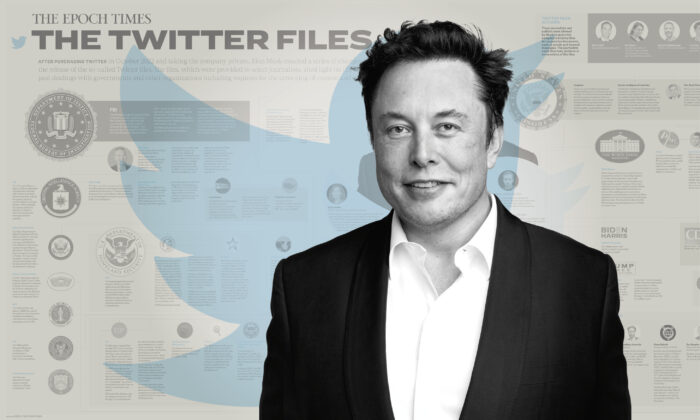
Musk allowed several independent journalists to submit search queries that were then used by #Twitter staff to search through the company’s internal documents, sometimes under the condition that the resulting stories would be first published on the platform itself.
The two journalists primarily responsible for the releases have been journalists @mtaibbi and @bariweiss.
Both are liberals who have expressed disillusionment with the more extreme currents of progressivism and neoliberalism.
Both are liberals who have expressed disillusionment with the more extreme currents of progressivism and neoliberalism.
Others involved in the releases have been independent journalists @lhfang and @davidzweig, former New York Times reporter @AlexBerenson, as well as author and environmentalist Michael @ShellenbergerMD.
The journalists have only released a fraction of the documents they reviewed. They’ve also redacted the names of employees involved, other than some high-level executives.
The documents show that the #FBI and other agencies have been scrutinizing the political speech of Americans on a significant scale, and trying to get lawful speech suppressed or removed online.
Many have deemed that a violation of the First Amendment.
Many have deemed that a violation of the First Amendment.
The #FBI had its sweep #Twitter to identify content and accounts that it tried to get removed, even though the content didn't necessarily violate any laws.
Elvis Chan coordinated communication with Twitter leadership for the FBI and the broader intelligence community.
Elvis Chan coordinated communication with Twitter leadership for the FBI and the broader intelligence community.
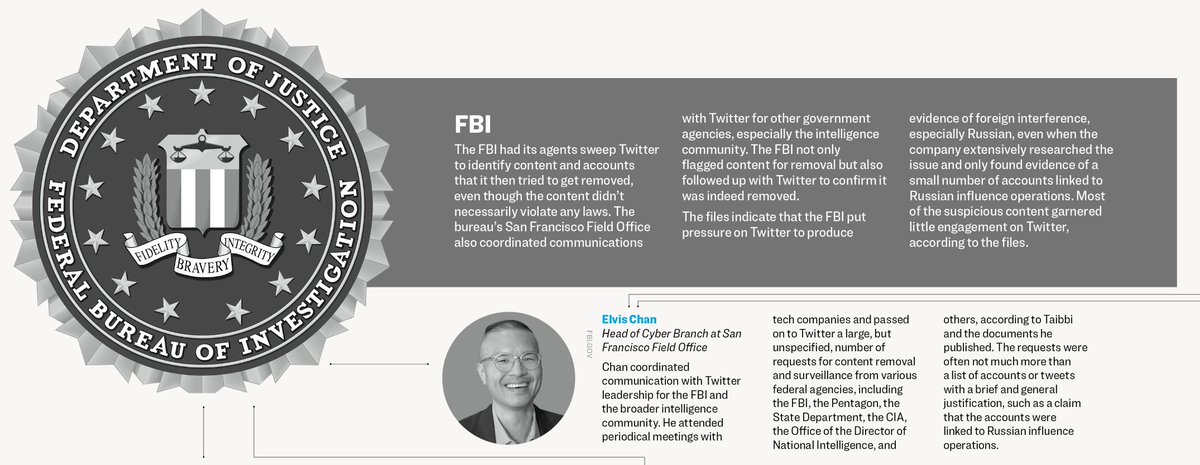
Members of the Foreign Influence Task Force (FITF) regularly met with #BigTech executives.
FTIF allegedly employed dozens of #FBI agents to sift through social media to find content supposedly coming from malicious foreign actors and flagging such content for censorship.
FTIF allegedly employed dozens of #FBI agents to sift through social media to find content supposedly coming from malicious foreign actors and flagging such content for censorship.
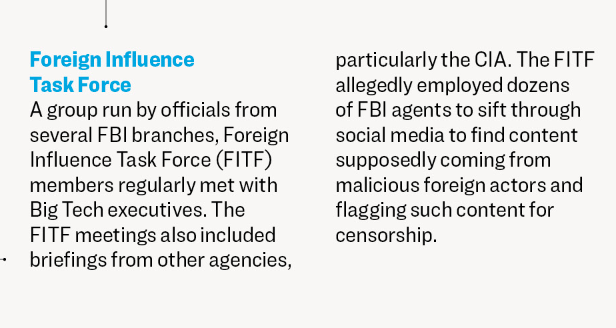
[Redacted], a Twitter executive who previously worked for the #CIA, wrote an email suggesting that #Twitter wouldn't dare to disobey a takedown request, because the media fallout of the government publicly labeling the account in question as run by Russian intelligence. 
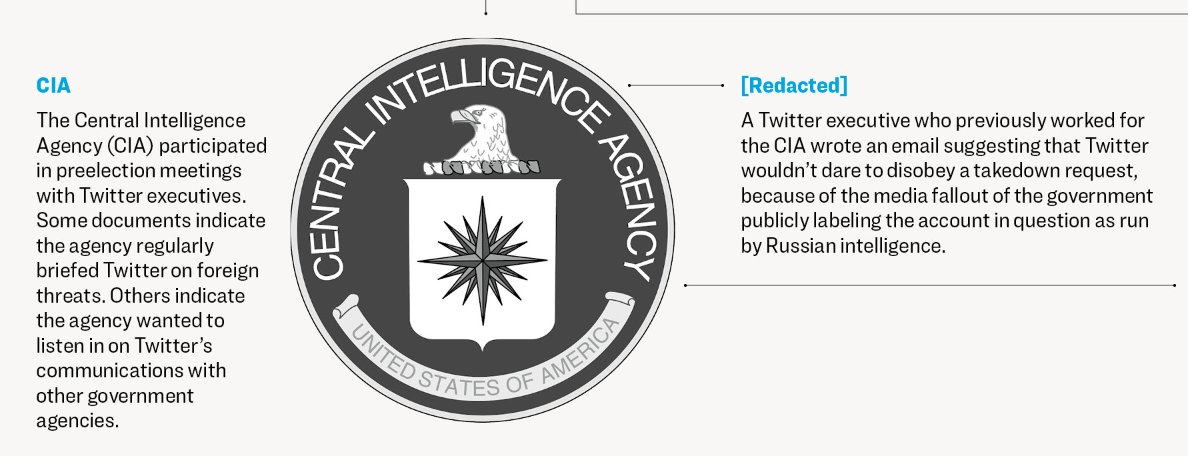
The @StateDept's Global Engagement Center (GEC) would flag thousands of accounts for #Twitter.
For many of the accounts, Twitter couldn't find any association with foreign government actors, the documents indicate.
For many of the accounts, Twitter couldn't find any association with foreign government actors, the documents indicate.
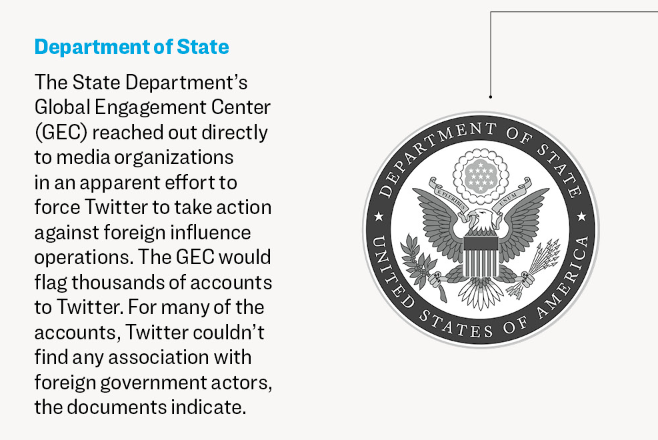
In 2017, the @DeptofDefense asked #Twitter to give preferential treatment to dozens of accounts used for influence operations in Arab countries.
The DoD also sent #Censorship requests to Twitter, according to @mtaibbi.
The DoD also sent #Censorship requests to Twitter, according to @mtaibbi.

The @NSAGov was one of the agencies that requested to listen in on industry calls between social media companies and the #FBI. 
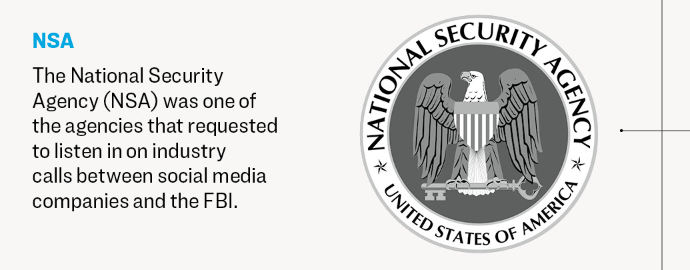
Some local police departments were also implicated in making #Censorship requests to #Twitter.
In one example supplied by @mtaibbi, the Minnesota Police Dept. reached out to Twitter via the local #FBI—the request was funneled through by Elvis Chan.
In one example supplied by @mtaibbi, the Minnesota Police Dept. reached out to Twitter via the local #FBI—the request was funneled through by Elvis Chan.
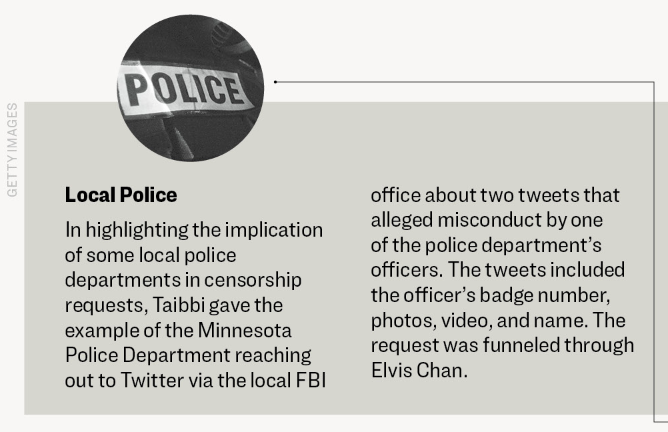
State governments also submitted content takedown requests to #Twitter via the #FBI, according to @mtaibbi. 

Corporate media also appear to have been a part of an indirect enforcement mechanism for #Censorship.
Content and accounts claimed by the government would be provided to the media, which would then pressure #Twitter to act.
Content and accounts claimed by the government would be provided to the media, which would then pressure #Twitter to act.
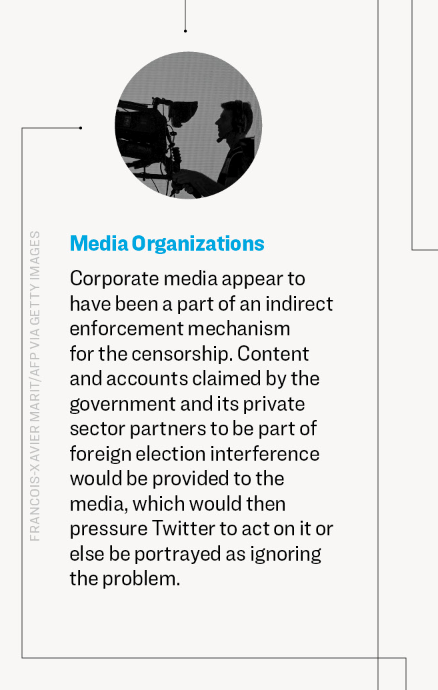
The @DHSgov runs the @CISAgov and finances the Elections Infrastructure Information Sharing and Analysis Center, a system that allows state officials to share data on election misinformation and facilitate removal of such content online. 
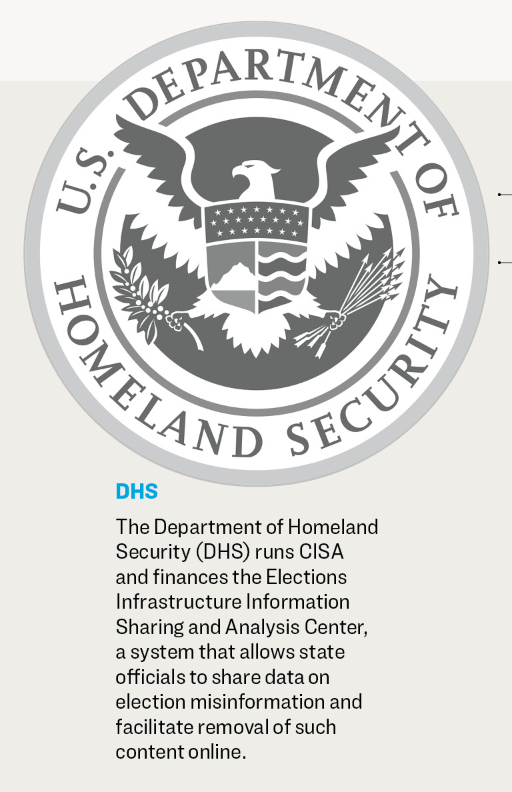
In 2020, @CISAgov partnered with EIP, a group that would flag election "misinformation" to social media companies.
A CISA official acknowledged the agency forwarded to social media companies content moderation requests submitted to EI-ISAC by state and local election officials.
A CISA official acknowledged the agency forwarded to social media companies content moderation requests submitted to EI-ISAC by state and local election officials.
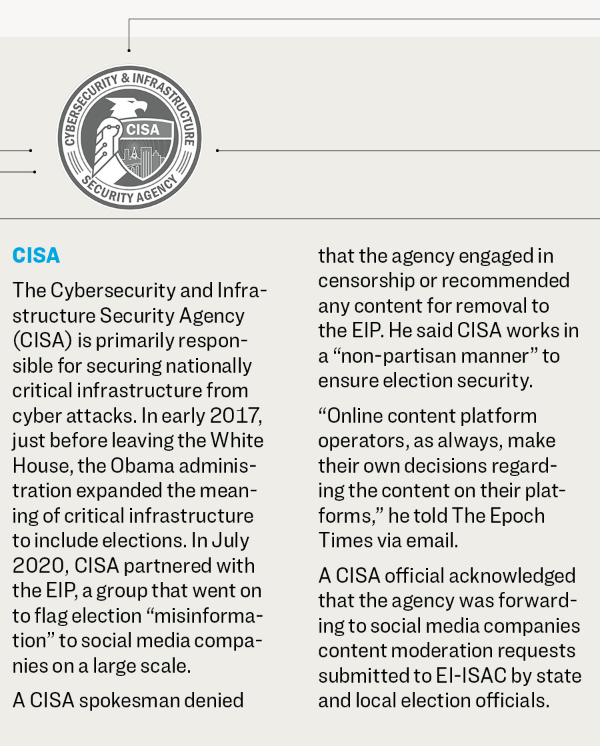
EI-ISAC encourages election officials to report "misinformation" or "disinformation," which is then forwarded to @CISAgov, which "will submit it to the relevant social media platform(s) for review." 
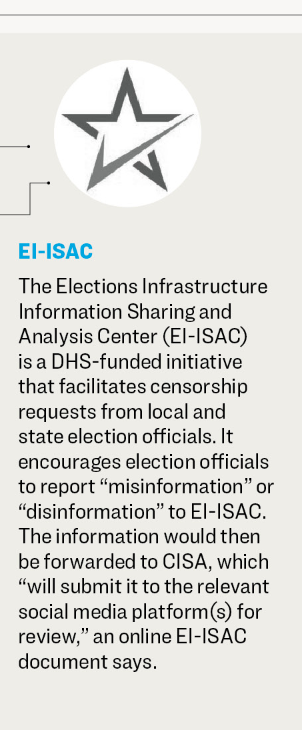
The @EI_Partnership (EIP) comprises 4 organizations: @stanfordio, @uwcip, @DFRLab and @Graphika_NYC.
EIP leader Alex Stamos said the group would "fill the gap" in countering election disinformation that the government wasn't authorized to address.
EIP leader Alex Stamos said the group would "fill the gap" in countering election disinformation that the government wasn't authorized to address.
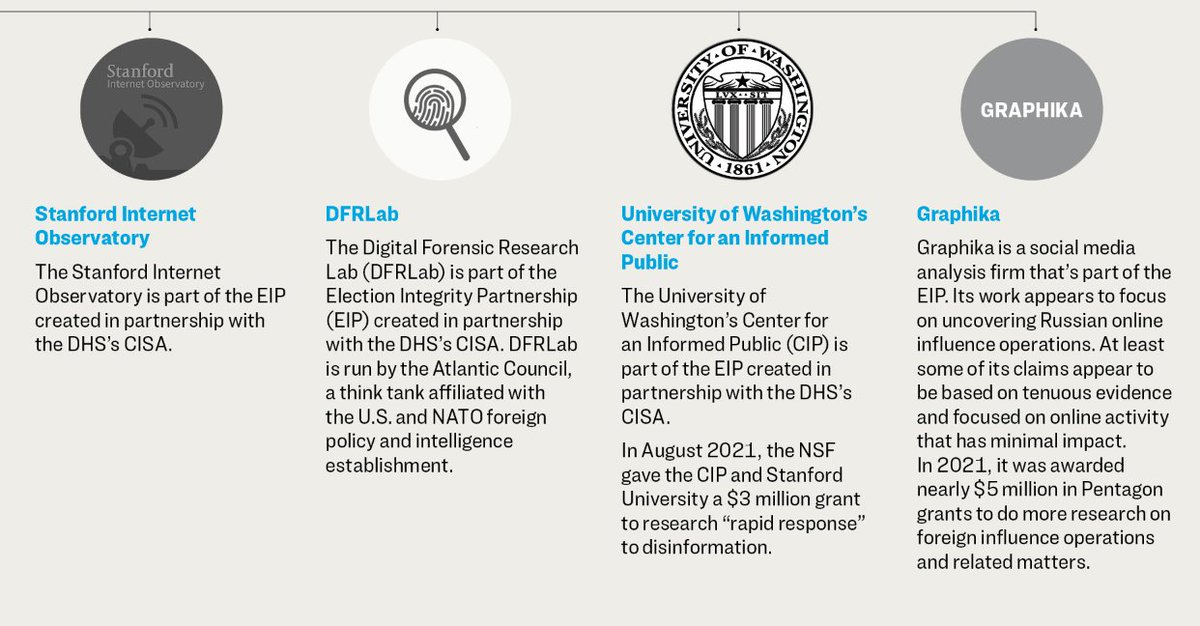
The @EI_Partnership took credit for facilitating the removal of suppression of 22 million pieces of online content and dozens of entire "narratives." 
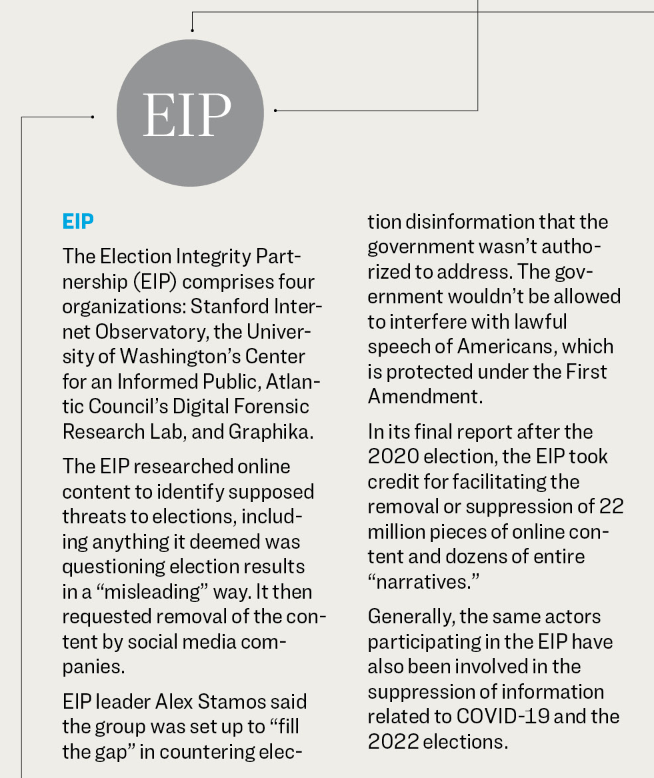
The "Twitter Files" indicate that #Twitter executives felt pressured to find more accounts that could be attributed to foreign interference and to comply with takedown requests in order to avoid costly new legislation and negative media coverage spurred by lawmakers. 
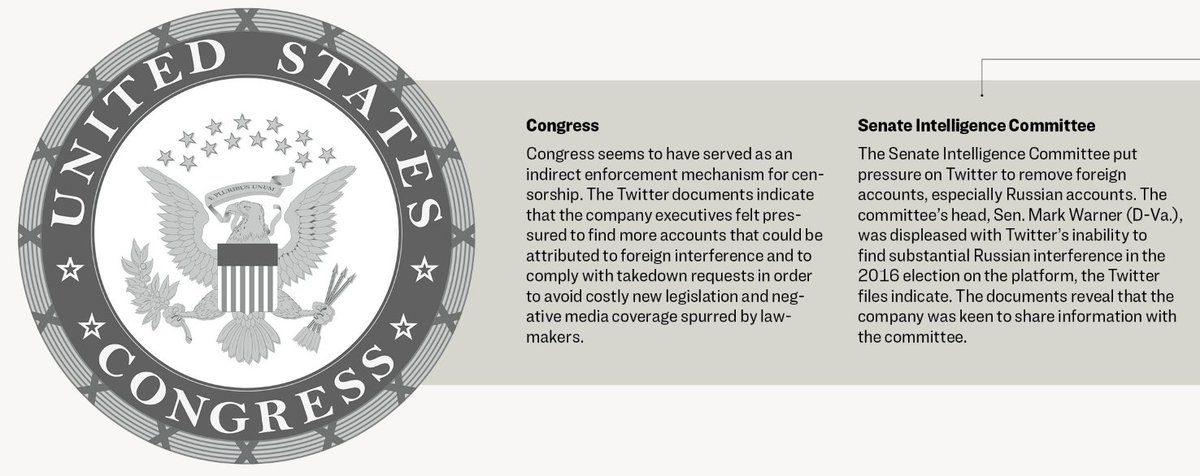
The Senate Intelligence Committee put pressure on #Twitter to remove foreign accounts, especially Russian accounts.
The Committee's head, Sen. @MarkWarner, was displeased with Twitter's inability to find substantial Russian interference in the 2016 election.
The Committee's head, Sen. @MarkWarner, was displeased with Twitter's inability to find substantial Russian interference in the 2016 election.
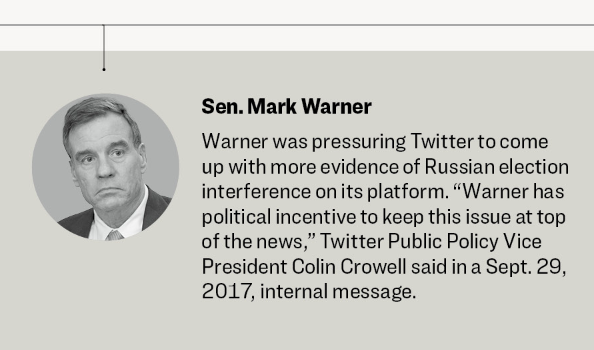
One notable revelation from the "Twitter Files" was the involvement of the office of @RepAdamSchiff in the removal of journalist @paulsperry_'s Twitter account. theepochtimes.com/rep-schiff-pre… 
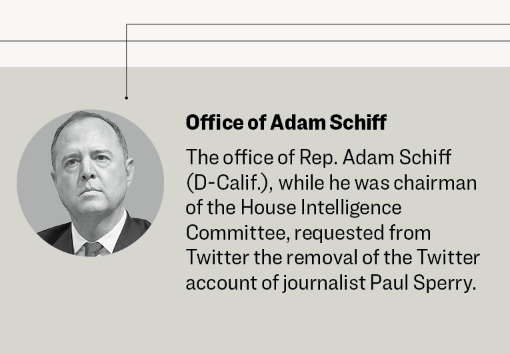
Officials from the @WhiteHouse sent a significant but unspecified number of #Censorship requests to #Twitter.
The documents show the Biden White House was putting pressure on Twitter to censor more.
The documents show the Biden White House was putting pressure on Twitter to censor more.
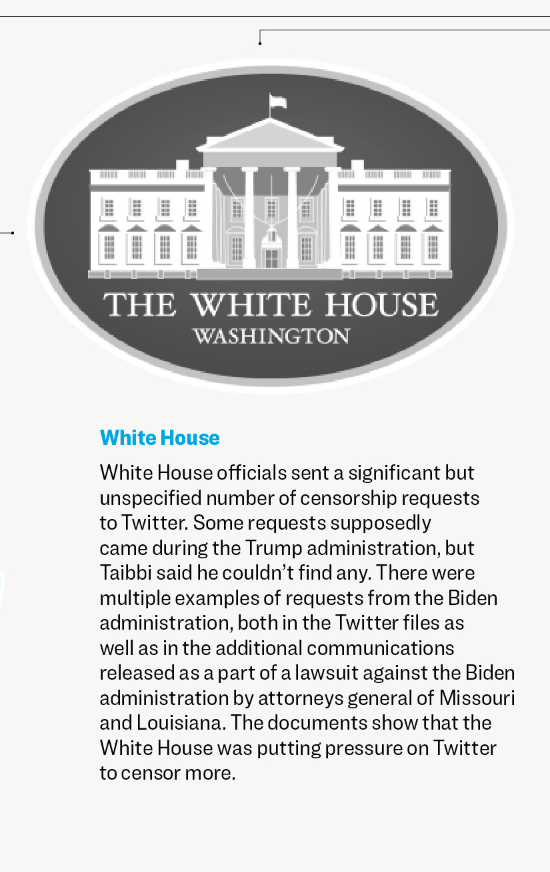
#Pfizer has earned tens of billions of dollars in the past 2 years through its #COVID19 vaccine.
@pfizer board member Dr. Scott Gottlieb sent #Twitter at least 3 censorship requests, targeting…
@pfizer board member Dr. Scott Gottlieb sent #Twitter at least 3 censorship requests, targeting…

1) … a doctor who argued that natural immunity was superior to vaccination. #Twitter suppressed the tweet, even though the doctor was correct.
2) … @justin_hart, who argued against school closures.
3) … @AlexBerenson over his criticism of Dr. #AnthonyFauci.
2) … @justin_hart, who argued against school closures.
3) … @AlexBerenson over his criticism of Dr. #AnthonyFauci.
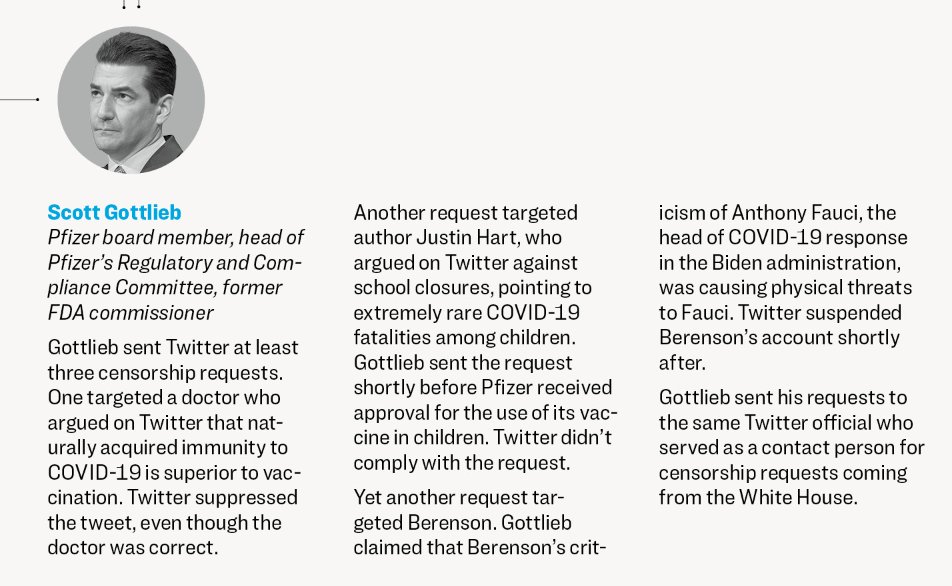
The "Biden team" sent #Twitter multiple requests for removal of content. 
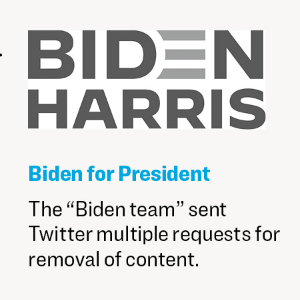
After the @nypost's #HunterBidenLaptop story was suppressed, accounts of those sharing in—including then press secretary @kayleighmcenany—were suspended.
Trump campaign manager Mike Hahn demanded answers from Twitter.
Trump campaign manager Mike Hahn demanded answers from Twitter.
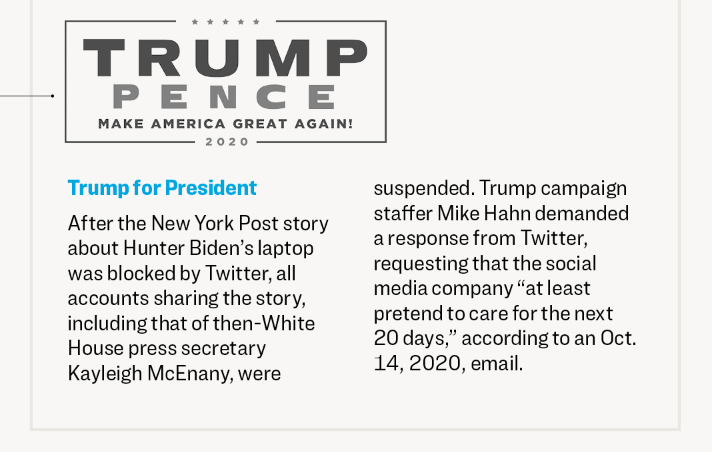
#COVID19 guidelines by the @CDCgov were used as a measure for what could and couldn't be said on the platform.
Yet the guidelines themselves has been guesswork to some degree as the scientific understanding of the virus has been a matter of ongoing debate and remains incomplete.
Yet the guidelines themselves has been guesswork to some degree as the scientific understanding of the virus has been a matter of ongoing debate and remains incomplete.

Reported @davidzweig "found countless instances of tweets being labeled as 'misleading' or taken down entirely, sometimes triggering account suspensions, simply because they veered from CDC guidance or differed from establishment views."
Since the start of the Biden administration, the @NSF has given nearly $40 million to universities to counter "disinformation" or "misinformation."
At least one of the grants reportedly targets "populist communication" to determine "how to best counter populist narratives."
At least one of the grants reportedly targets "populist communication" to determine "how to best counter populist narratives."
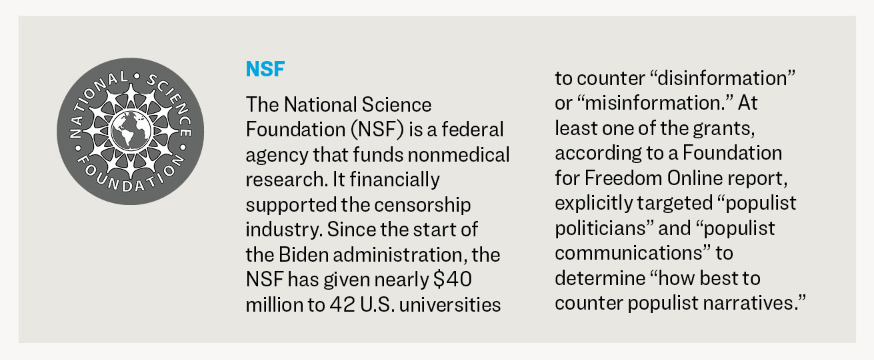
Some of the targeted accounts include:
- @DrJBhattacharya
- @MartinKulldorff
- Euzebiusz Jamrozik @ID_ethics
- Chaya Raichik @libsoftiktok
- @dbongino
- @charliekirk11
- @paulsperry_
- @DrJBhattacharya
- @MartinKulldorff
- Euzebiusz Jamrozik @ID_ethics
- Chaya Raichik @libsoftiktok
- @dbongino
- @charliekirk11
- @paulsperry_
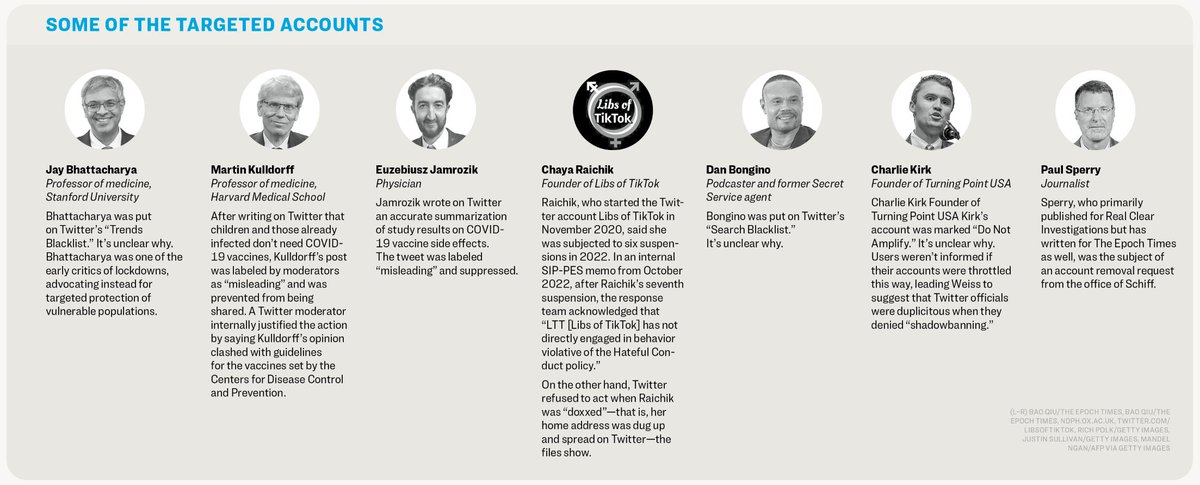
"Twitter Files" authors: @mtaibbi, @bariweiss, @ShellenbergerMD, @lhfang, @davidzweig and @AlexBerenson.
These were the journalists that @elonmusk allowed to query #Twitter's internal files for responsive documents.
These were the journalists that @elonmusk allowed to query #Twitter's internal files for responsive documents.

After @elonmusk purchased Twitter, he enabled key details on its inner workings & interactions w/ gov't to be revealed by @mtaibbi @bariweiss @ShellenbergerMD @lhfang @davidzweig & @AlexBerenson…
Here we capture it in a comprehensive INFOGRAPHIC. 🧵👇
Here we capture it in a comprehensive INFOGRAPHIC. 🧵👇
https://twitter.com/EpochTimes/status/1615354395813883905
• • •
Missing some Tweet in this thread? You can try to
force a refresh

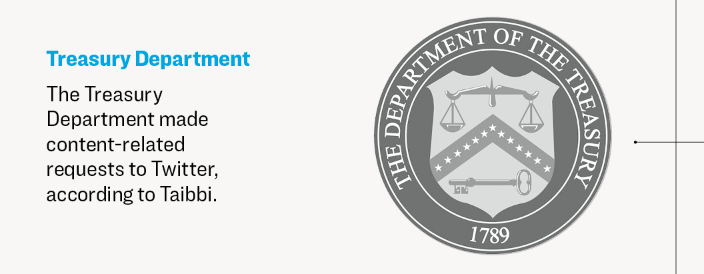




![[A movie still from the 1955 “To Hell and Back” depicting Murphy’s time in combat. He starred as himself in the film. Universal Pictures]](https://pbs.twimg.com/media/GtZ3pUbWUAAuBDF.jpg)
![[Audie Murphy’s young self played by actor Gordon Gebert in “To Hell and Back.” Universal Pictures]](https://pbs.twimg.com/media/GtZ3pUeXMAAcYZu.jpg)
![[Audie Murphy being rejected by the U.S. Navy, in “To Hell and Back.” Universal Pictures]](https://pbs.twimg.com/media/GtZ3pUXXcAA9kVG.jpg)













